Photographs and Captions by Sophia McRae

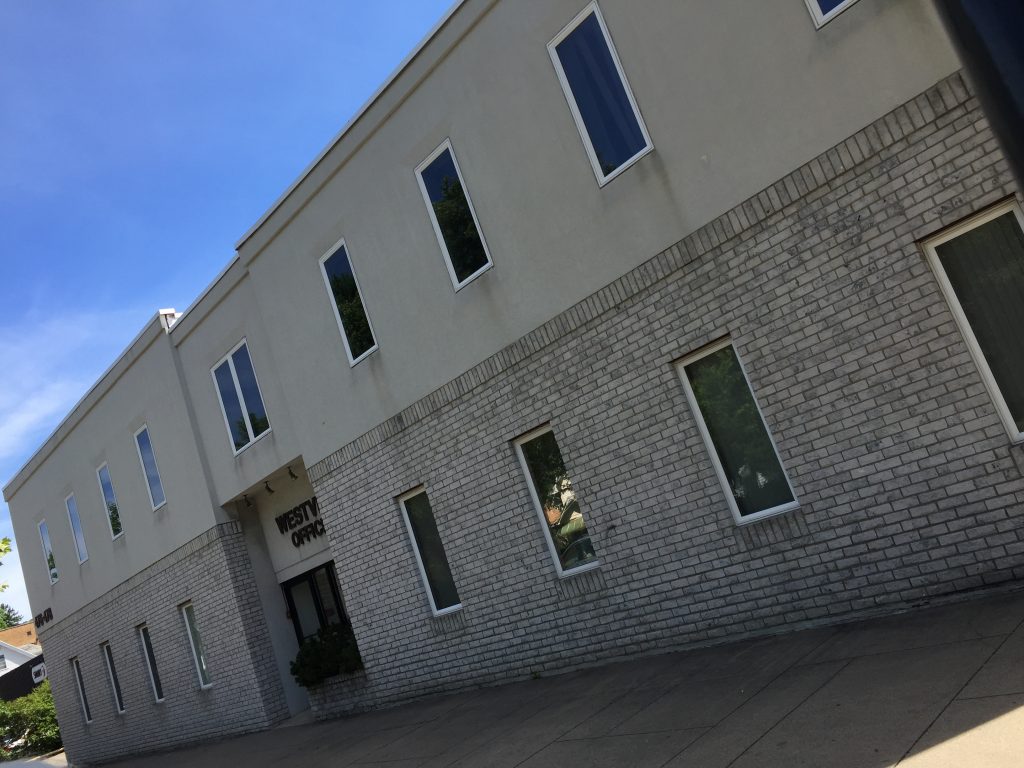
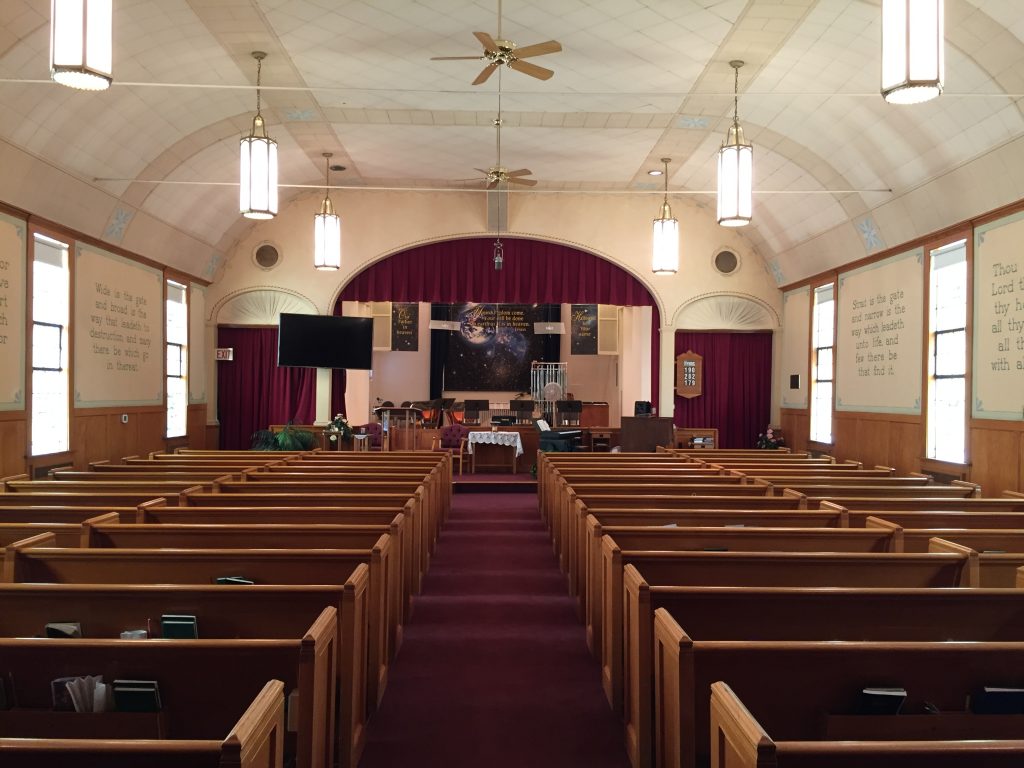
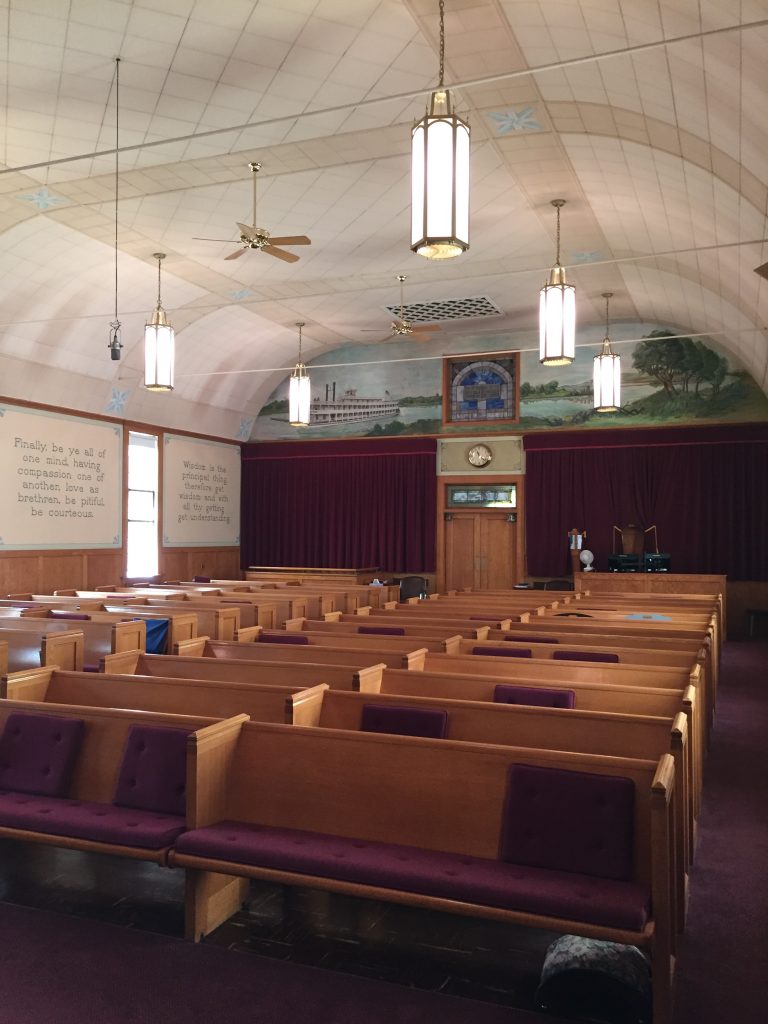
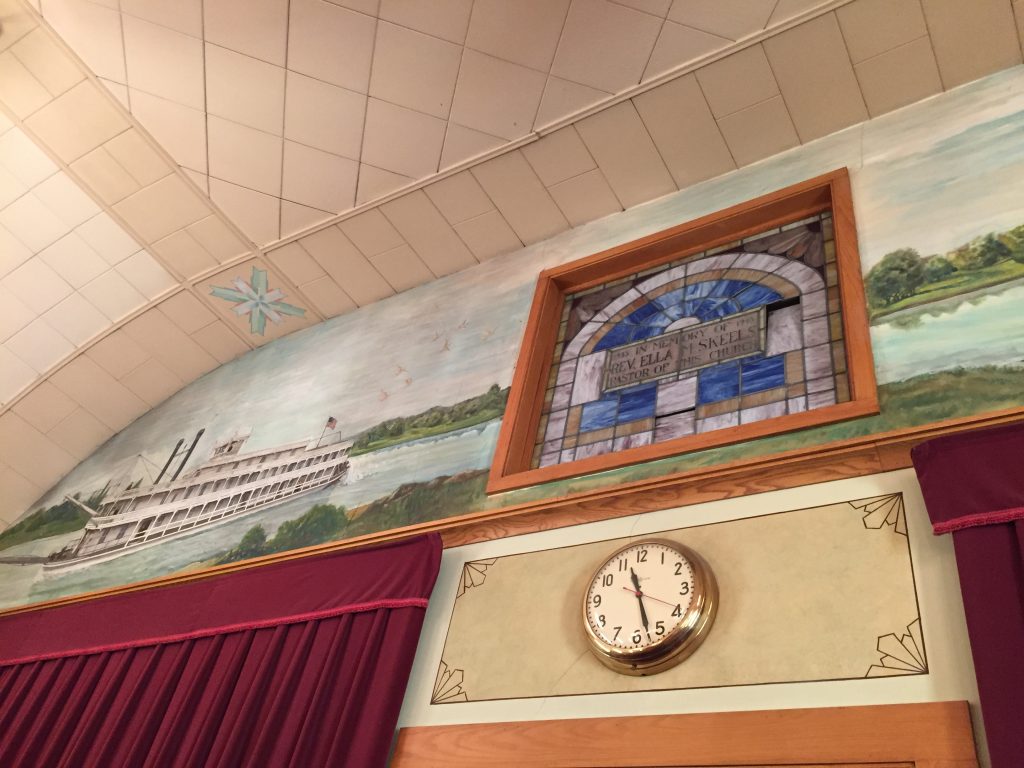
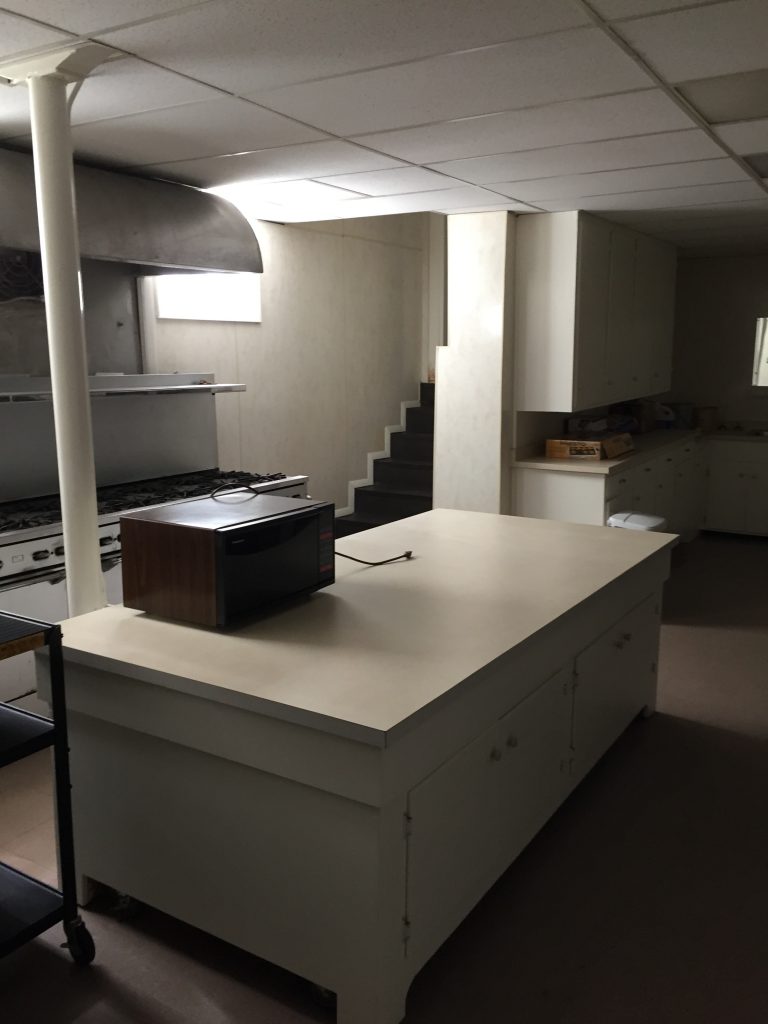


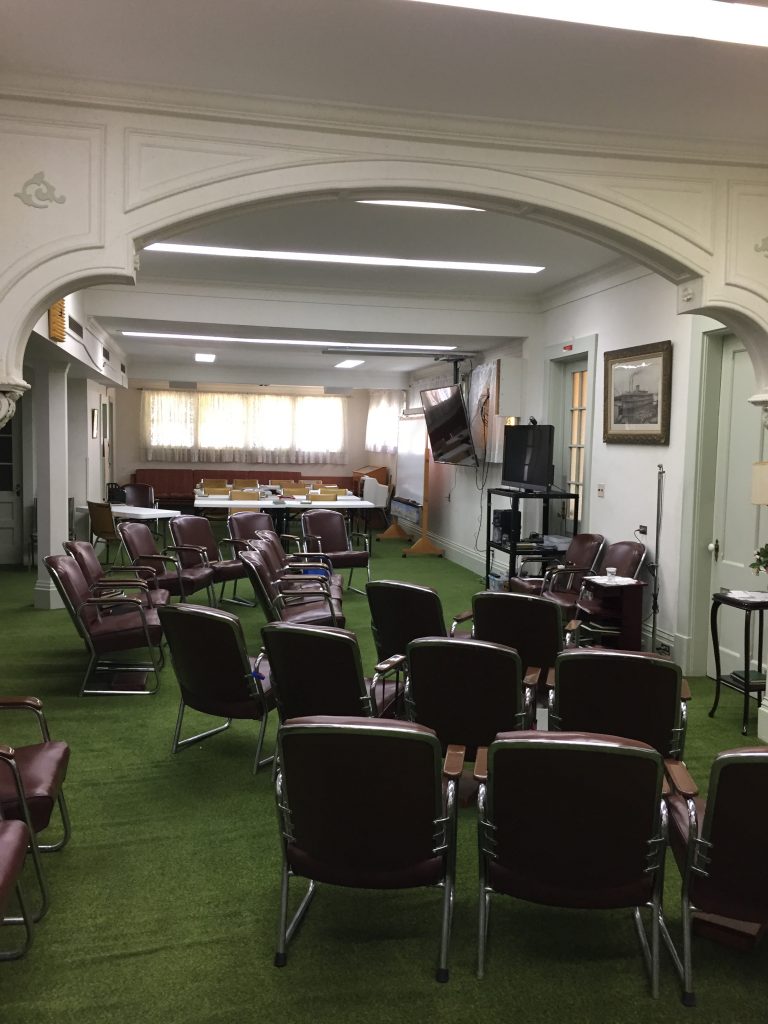
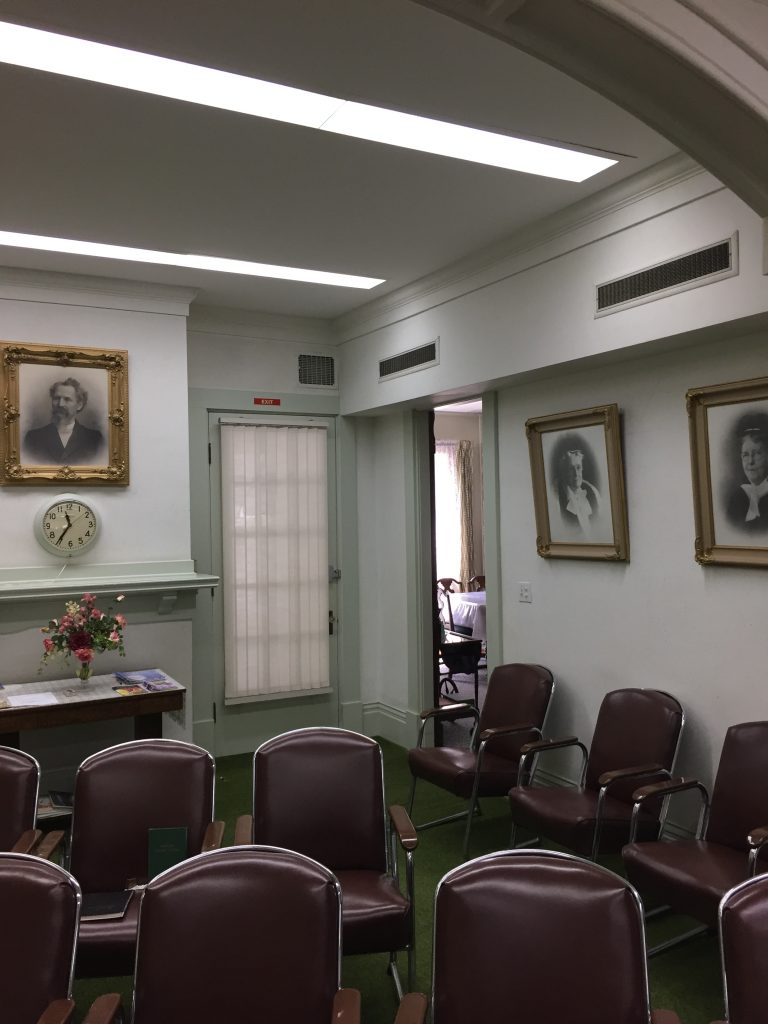
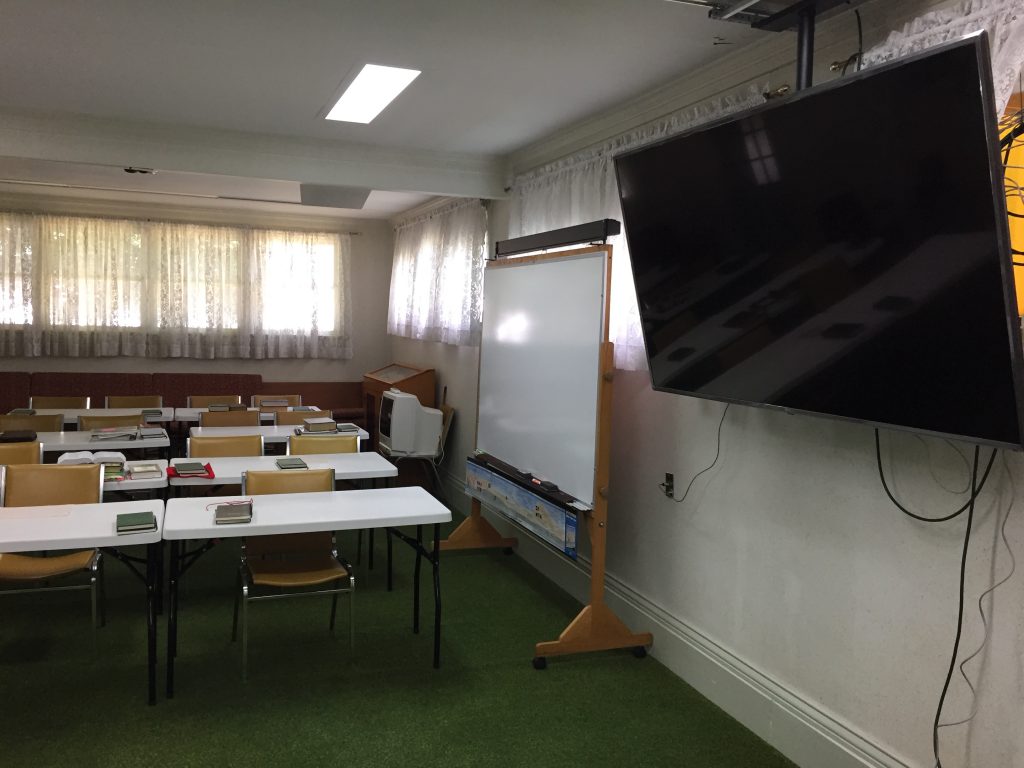

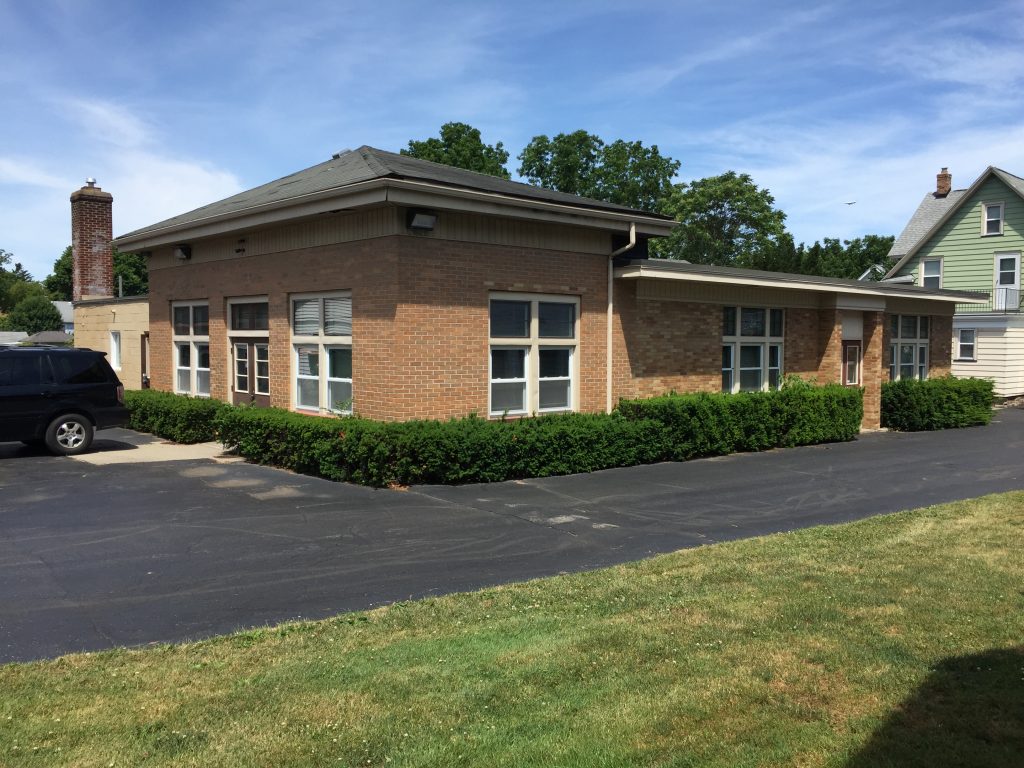
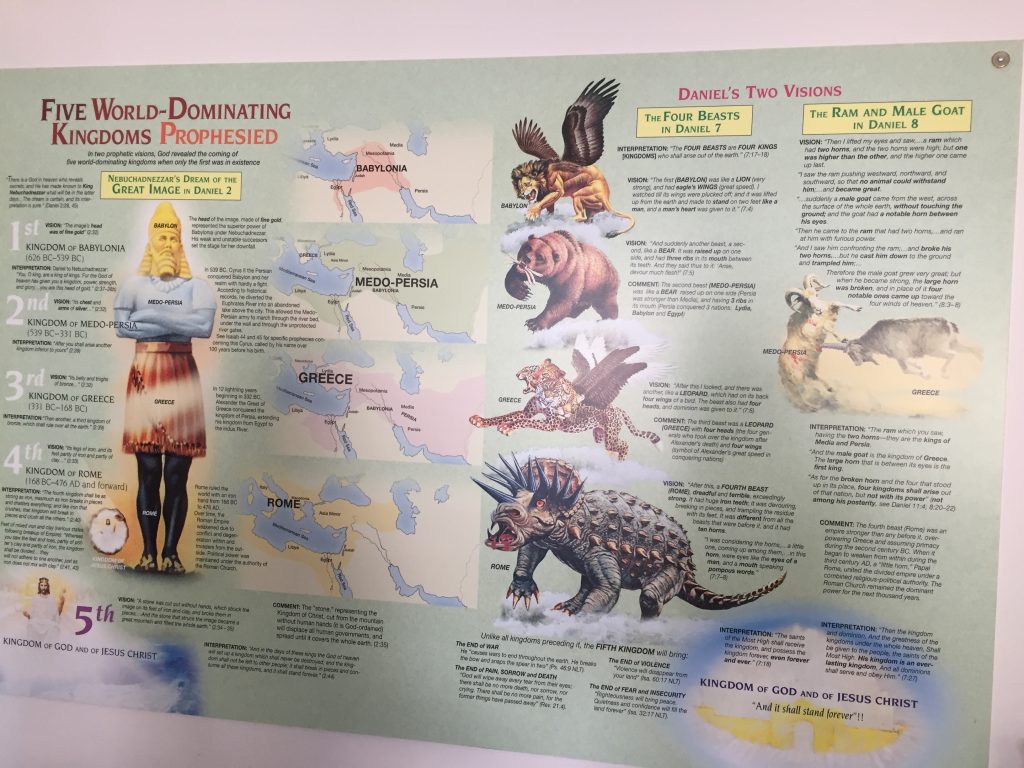

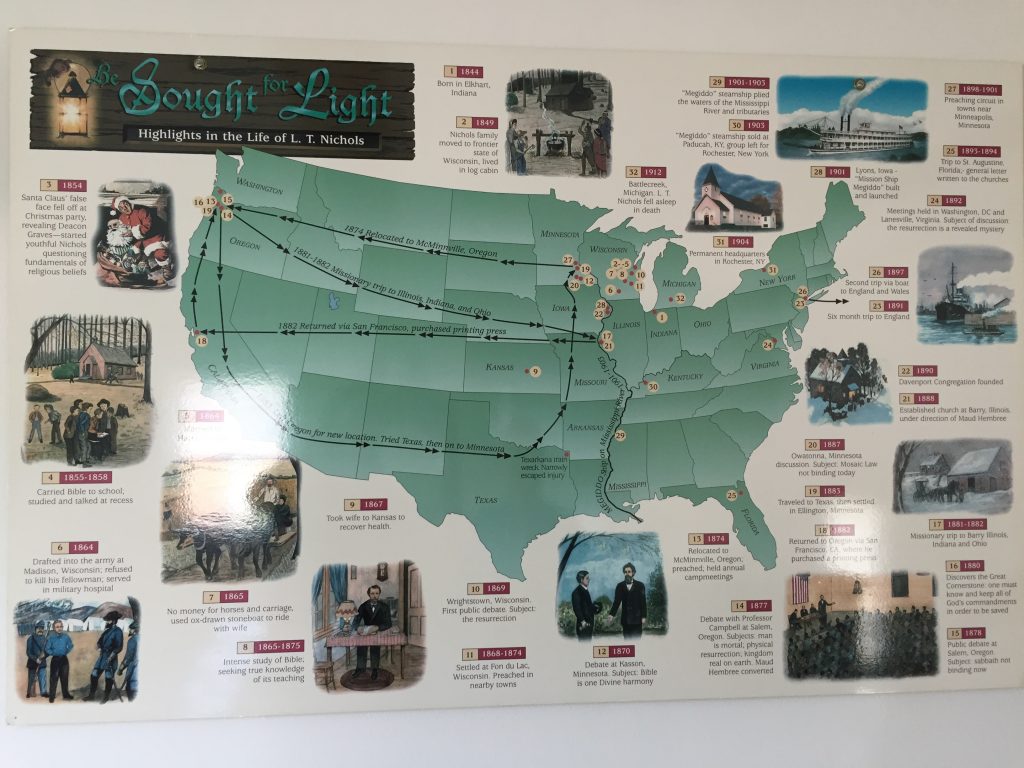






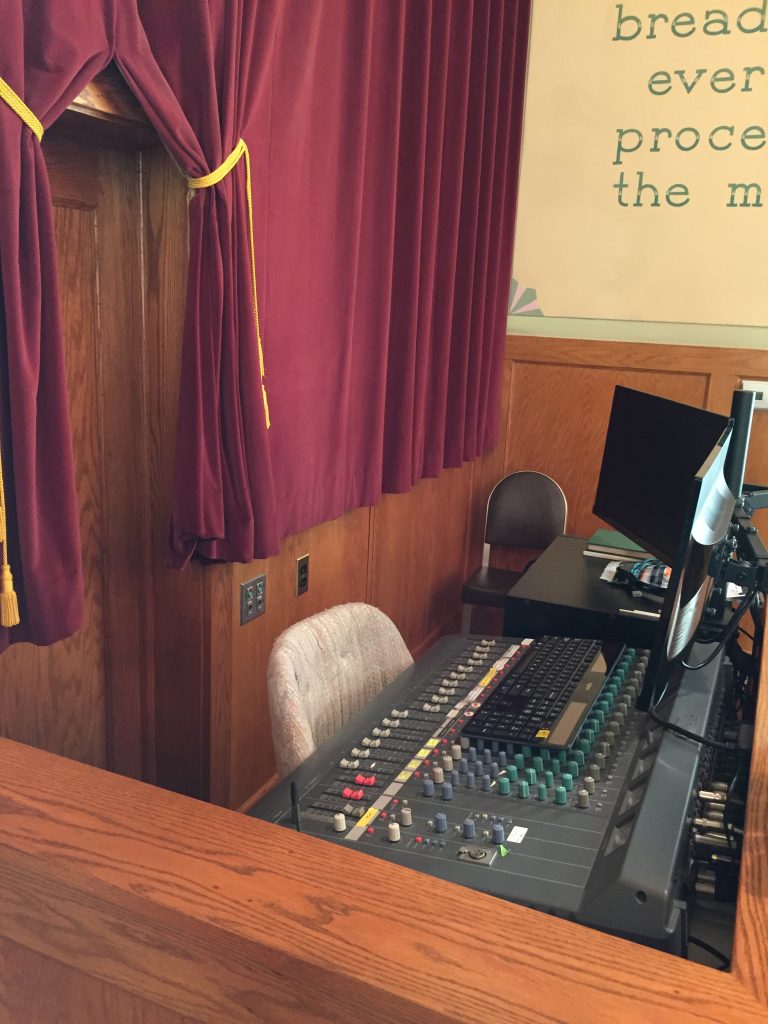
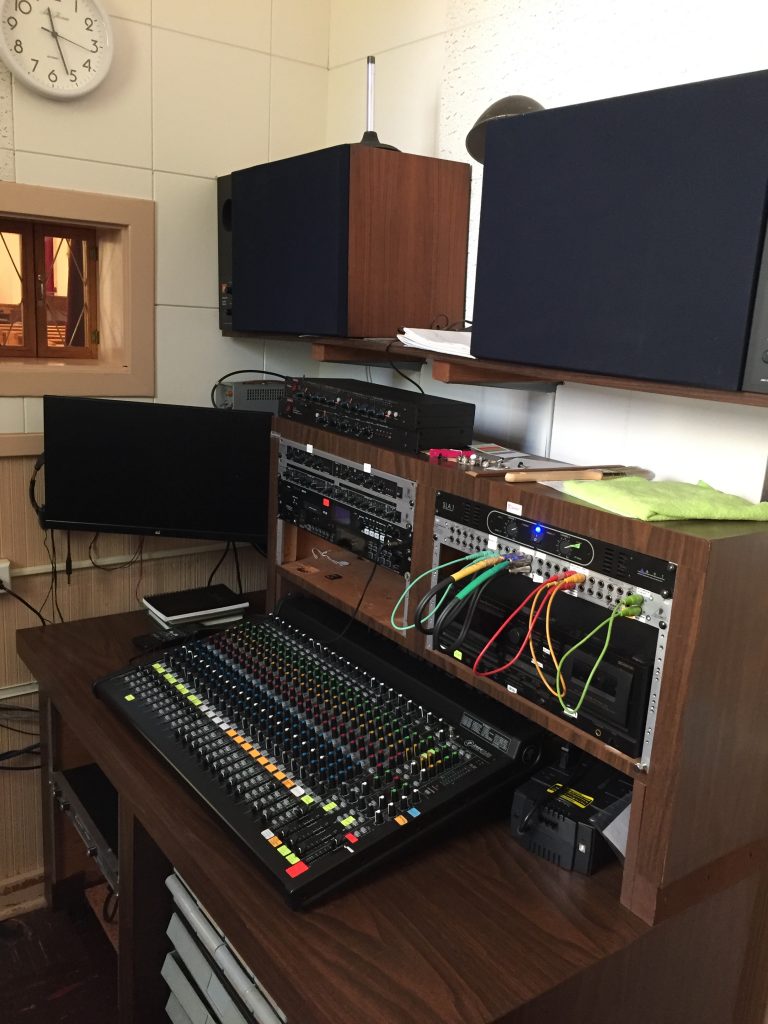















Editor’s Note: Scans from the period histories of the Megiddo Mission are published online with the permission of the Megiddo Mission Church and the University of Rochester Libraries, Department of Rare Books, Special Collections, & Preservation.
The Megiddo Mission Church arrived in Rochester in 1904 and has since been one of the most fascinating parts of the city’s history. Based largely around their own self-reliant community, it is by their own determination that the Megiddos were never wholly integrated into the life of the rest of the city. Their work nevertheless contributed largely to the development and growth of the southwestern quadrant of Rochester, specifically the 19th Ward neighborhood.
The congregation is named after a Biblically-referenced village in Palestine, translated from Hebrew as “place of troops,” or “God is in this place with a band of troops” (History of the Megiddo Mission, 1965, 16). Megiddo was a strategically located village along historic trade and military routes, and was cited in the Old Testament as a site of frequent violent conflict (vi). The congregation, however, is more often remembered because of its notable missionary steamship named The Megiddo, which sailed along the waterways of the Mississippi River for two years between 1901–1903. The boat was quite a spectacle, housing the entire congregation as their band spread their message throughout middle America.
Truly unique in its methods and message, the Megiddo Mission is a congregation of its own theology and claims no affiliation with any established Christian sect, “whether Adventism, Mormonism, or the Jehovah’s Witnesses or any of the Pentecostal groups” (vi). The Megiddo Church is still located on Thurston Road in the 19th Ward, on the site where the congregants settled in 1908. Although their population has dwindled greatly since its height in the first half of the twentieth century, they continue to work within their community and in missionary endeavors with unwavering faith and determination.

The work of the Megiddo Church is based in large part on the revelations of its founder, Reverend L.T. Nichols. Considered by the congregation as their “spiritual emancipator,” L.T. Nichols gathered a substantial following of converts through religious preaching, open sermons, and public debates in the mid- to late nineteenth century. In an autobiographical history of the mission, the author writes that the story of the Megiddo Church is that of L.T. Nichols and his “lengthened shadow” (14).

L.T. Nichols, named after the initials of his father, Lemuel Truesdale, was born in Elkhart, Indiana on October 1, 1844 (1). The family moved to the frontier of Wisconsin in 1849, where he spent more hours at home helping his mother and sister than in the schoolroom. Nevertheless, he was an earnest student of the Bible, known even as the “boy preacher” for challenging his ministers and teachers on their interpretations of the text (1). He justified this behavior with the principle by which he later preached: “Let God be true, though every man a liar” (2). Nichols believed in the purity of the words of the Scripture, and sought in them the secret of salvation. Of this, he wrote, “The great reason of success in any undertaking in life is expressed by the one term — ‘Earnest devotion to a cause held dear’” (6). He emphasized the importance of a dedicated personal study of the Bible, and adhered strictly to the one text. In discussing his search of the Truth (or what he referred to as True Religion):
It was revealed to His holy Apostles and Prophets, and I, by reading, could understand…I must find the key of knowledge. This I did, as I studied the blessed Bible in Hebrew, Greek and English, that I might attain to a knowledge of its more than wonderful pages. I grasped the key with a firm, unyielding grasp — the fables were discarded as truth was discovered to view (6).
Nichols married in 1864 and was drafted shortly after into the army. Because of his refusal to bear arms, he went on to work in a military hospital before returning to his farm. When Nichols was 30 years old, he moved his wife, sister, and parents with a group of followers to McMinnville, Oregon, where they remained from 1874 to 1883 (Patzwald, n.pag.). From his new home, Nichols printed pamphlets, held public sermons, and engaged frequently in popular debates against other religious leaders, such as ministers from nearby churches. It was at one public debate with a professor in WIllamette Valley in 1877 that L.T. Nichols met the Reverend Maud Hembree, who would become his pulpit assistant and, later, his successor. There had been another somewhat similar Christian sect to the Megiddos known as the “Christadelphians,” founded by Dr. John Thomas in the nineteenth century. However, Nichols’s congregation members distanced themselves from their contemporaries and, upon a revelation by Nichols, officially established themselves as the Megiddo Mission in 1880. He proclaimed that “no man could be saved apart from knowing and keeping every commandment of God” (Patzwald, n.pag.). His message focused on the following convictions:
1.) The search for the Truth and True Religion would only be found through “hidden treasures” in the Scripture, and would be discovered by the Divine command to seek the wisdom of God.
2.) The prophecy of the Apostle Paul that religious teachers “would turn the people from truth to fables,” and the denial that any source (such as other religious groups or sects) aside from the Bible could prophes the Truth (History of the Megiddo Mission, 1965, 7).
In 1883, the congregation moved once again to Dodge County, Minnesota, where Nichols built his new church and home. Soon after, the church established new congregations in the surrounding areas, including in Iowa, Illinois, and Ohio (14). An apt businessman and inventor along with being a skilled debater and enthusiastic preacher, the Reverend funded church undertakings by manufacturing, selling, and patenting farm machinery. This also provided for two missionary trips to England with his wife. Notably, his second trip in 1897 was on the maiden voyage of the ship, Kaiser Wilhelm der Grosse, said to be “one of the largest and finest passenger vessels afloat at the time” (14). He used the trip back to conduct religious services, during which he admonished Darwin’s theory of evolution. Instead, he preached “God’s evolution,” from man’s original sinful state to Christ, before finally reaching the highest form of life, immortality (14). Missionary work on the sea may have inspired the Reverend’s idea for the next stage of the Megiddo Mission’s evolution (and probably the time in which they attracted the most attention), aboard the iconic missionary steamship The Megiddo.
The Reverend conceived the idea of a missionary steamship at the turn of the century as a way by which the congregation could most cheaply and efficiently contact people in everyday life. The ship would be a place where the “works of the flesh would be overcome” (15). Construction of a boat begun soon thereafter at the cost of $22,000, which the church members and the proceeds of Nichols’ patented technology funded. In the meantime, the brethren sold their farms and properties in preparation for the collective move to the boat. On October 24, 1901, The Megiddo was officially launched from the Godfrey Marine Ways in Iowa with 30 families and with great fanfare and celebration. The spectacle was widely publicized by local newspapers, who wrote of the Megiddo Mission Band playing jovially on the deck of the red, white, and blue-painted ship.
The boat was 205 feet long with a beam of forty feet and included three decks and two 125-horsepower engines (17). Although the congregation of about 90 lived on the boat, there were 52 separate staterooms with “the family lines being as carefully drawn … as in an apartment house. In no sense could the enterprise be termed communistic” (17). Although there was one large dining room, it was sectioned off for each family to eat separately, including individual cupboards and tables. Families were given their own lockers and sections in the refrigerator for individual meal preparation, although the cooking was still done by the women in one large kitchen (20). A complete machine shop for manufacturing and repair work, a carpentry shop, a laundry, and a flour mill were also onboard. The ship included sanitary plumbing, was steam-heated, and was lit with acetylene gas. The centerpiece of the ship was the general meeting room, which could fit over 100 people and an orchestra, and included a piano and a chapel organ (20). The boat towed a barge holding fruits, vegetables, and the Brethren Bandwagon (Patzwald, n.pag.). Religious and patriotic ornamental elements such as inscriptions of missions, mottos, and prayers were found throughout the ship, as it was designed for not only for practicality, but also for comfort.

The Megiddo set off south down the Mississippi River, barely fighting off precarious ice flows before they reached warmer waters. Some locks remained open an extra two weeks into the season in order to let the Megiddo to pass through. The crew settled in Memphis, Tennessee, for their first winter. On March 27 of the following spring, they were able to head back north to stay in St. Louis. Traversing the surrounding waterways, they moved south again on October 9, this time on the Ohio and Cumberland Rivers to Nashville. While docked, the congregation would parade through local towns with the church band playing music and distributing handbills. They carried a large tent in which they would hold open services and perform missionary work. These services included “band music, singing, preaching by Captain Nichols or the Reverend Hembree, and calls for commitment to reformed lives. They were very popular and were reported regularly in local newspapers” (Patzwald, n.pag.). The brethren earned money for their work by selling craft goods made by the women, while the men found seasonal employment in the area (History of the Megiddo Mission 1965, 19). Particularly in Nashville during their second winter, the Megiddos built and rented houses for additional church income (Patzwald, n.pag.). After two seasons of travel along the waterways of the midwest and suffering two sandbar accidents, the congregation opted to pick up missionary work in the northeast, where their fervent leader had relatives.The boat was sold in Paducah, Kentucky, in December 1903 to a river packet company for $15,000 (Democrat, 4 Jun. 1904, 11). It was repaired and renamed the Chattanooga, until it met its unfortunate end on the Tennessee River. It was reported the boat “at 1 o’clock Wednesday morning, May 25th, broke in two parts and went down with all her cargo. The boat is said to be a total wreck, but efforts were made to recover the cargo…. There were twenty-one passengers on board when the boat struck, but they were taken safely to shore in yawls” (Democrat, 4 Jun. 1904, 11). By January 25, however, the Megiddos had all boarded a train to Rochester, NY (History of the Megiddo Mission 1965, 21).

Reverend Nichols purchased five acres of land on Thurston Road — the same site where the Megiddo Mission can be found today — when he arrived in Rochester. At the time, the land was barely within the city limits, adjacent to farmland and undeveloped state properties. A map of the neighborhood can be seen in figures 1 and 2: The plate is dated from 1910, just a few years after the Megiddo band finished their construction. A Democrat and Chronicle article from April 3, 1904 included an interview with Nichols on his plans for the newly moved-in Megiddo Mission. The five-and-a-half-acre property on Thurston Road included one large house, two cottages, and a barn (Democrat, 3 Apr. 1904, 19). Of their progress, Nichols said,
We have done much work here, but there is more to do. You see, we haven’t papered this room yet. Then, we have the lighting system to install. Our machine for providing light is an invention of our own. We shall use acetylene. Of course, the carbide we shall buy. We are just putting in a system of steam heading now. We have a large range of our own invention, too: and we have yet to put it up. It is the finest range made (19).
Their style of living was truly unique. L.T. Nichols explained, “It is the common opinion that one house won’t hold two families, but there is no reason why many may not live happily together if they have the right spirit. They should be able to get along just as well as the clerks in a large store” (Democrat, 3 Apr. 1904, 19). When he was asked if his goal was to form a community, his response was, “No: our main object is to do good,” and described the upcoming construction of the church bandwagon (19).
While the congregation members built their campus, they rented a large house on the east side of the city and continued using their missionary tent to conduct services. Their first public services were held about a mile away from their property until they moved their work to the Lake Ontario shore, nearby recreational and residential areas. A Saturday Globe article from August 20, 1904, entitled “A Band of Zealous Christian Workers in Rochester” wrote about the new community: “The Megiddo workers have been well received by the press and people of the North and South, as well as in this city” (History of the Megiddo Mission, 1965, 23). In 1905, the congregation rented a church on Plymouth Avenue for 18 months, until it was sold to a Spiritualist congregation (Patzwald, n.pag.). A seasoned debater who condemned Spiritualist doctrine, Reverend Nichols presented the newcomers with a challenge during his final sermon in the church on August 5, 1906. He claimed, “I stand ready today to buy the Plymouth Church outright and make the Spiritualists a clean present of it if they will produce one phenomenon which I fail to explain upon reasonable investigation” (History of the Megiddo Mission, 1965, 23–24). The Spiritualists, however, ignored the proposition and moved into the space.
The church at Thurston Road was finished by 1907 and officially dedicated on March 22, 1908. The dedication drew 250 people (Patzwald, n.pag.). It was described in a Democrat and Chronicle article: “The edifice is after the style of Plymouth Spiritual Church … though smaller…. The room is handsomely carpeted. An excellent system of electric lighting, which the members declare is the best in the city, has been installed. The windows are beautifully colored” (Democrat, 20. Mar. 1908, 17). The church included a large dining room and a gymnasium, while elsewhere on the property stood a three-story, twenty-one-room building and another nine-room house (Patzwald, n.pag.). The mission members did not all live communally; most lived in separate houses along the two private roads that surrounded the property.
Cooperation and business prowess allowed for their success. Nichols sold lots along their streets to church members, and encouraged each family to build two houses — one for living in, and one to rent. By their dedication in 1908, forty-two houses had already been built and paid for. An article reported on their building projects: “The mission would like to own enough to control the neighborhood, so that no saloon could get in. No disorderly people could rent of the mission” (Democrat,23 Mar. 1908, 11). The church operated along a tithe system of payment, in which all church workers and missionaries, including the minister, organist, choir, or band, would not be paid for their work. The money paid in tithes, however, would cover the costs of missionary work, such as travel and advertising services (History of the Megiddo Mission, 1965, 25). The Megiddos made a point to never rely on any sort of outside funds or services; the church cost of $5,000 was paid in full before the church opened. L.T. Nichols, an experienced businessman, continued to financially advise his congregation:
He advised those in debt to pay what they owed before putting money into the collection box. People shouldn’t give money for religious purposes and leave their grocery bills unpaid, he declared. If the neighbors would put themselves under his leadership, no matter how poor they were, he would guarantee everyone a bank account within six months, and all would be happier than ever before in their lives (11).
In the first few years, the Megiddo band continued as they had during their stops along the Mississippi. Church members worked to sustain themselves and the church, described by Nichols:
Most of the men get work, and the women knit shawls and do fancy work. If anyone gets behind, the rest help him: but this isn’t often necessary. Each one manages his own affairs, but we buy wholesale and, thus, more cheaply than would be possible for single families. But every man has his own purse. A few of us have enough money to keep us (Democrat, 3 Apr. 1904, 19).
The Megiddos’ economic sensibilities were tied closely with a strict, practical outlook on life, their communal lifestyle, and firm religious belief. Similarly to how it was earned, money was saved in a number of ways with community-wide practices. The Megiddos did not buy tobacco, beer, coffee, or tea, for example. This and other displays of abstinence were justified by their physical and spiritual health, as well as their financial stability. Nichols said of this,
We believe that these hurt the stomach. We do not use spices in our foods. Thus, we save a great deal — and it is necessary that we should be economical. We have excellent health. Every morning we take a cold bath, so that grippe, when it is attacking others about us, passes us by. We live on porridge, brown bread, milk, fruits, beef, mutton and distilled water. Yes, we use sugar. We boil even the excellent water you have here (19).
The Megiddos continued to conduct missionary work within Rochester, with about four to twenty members going door to door at any given time. They sent missionaries to various parts of the United States and Canada, as well. Their presence became a powerful factor in the development of the southwestern quadrant of Rochester. L.T. Nichols made deals with the New York State Railways to extend trolley lines and asked the city to introduce sewers, waterways, sidewalks, and paved streets. Soon, new businesses and stores moved in, and the neighborhood began to thrive (Patzwald, n.pag.).
On Tuesday, February 13, 1912, Reverend Nichols traveled with his wife and sister to Battle Creek Sanitarium in Michigan, where he could recover from a sudden ailment. The Sanitarium had Seventh Day Adventist origins and was directed at the time by the famous Dr. John Harvey Kellogg, who supervised the site from 1875–1943 (“Battle Creek”). Prompted by the accidental discovery of breakfast cereal in the sanitarium kitchen, Dr. Kellogg went on with his wife and brother to found the Kellogg corporation and thus became the first cereal mogul. However, Kellogg’s work in the healthcare industry included several health reform ideas, including the importance of diet and various water bath therapies (“Battle Creek”). These treatments may have drawn Nichols to the sanitarium instead of a local hospital.
Reverend L.T. Nichols performed two sermons the Sunday before his travel, but Maud Hembree recorded simply that “he did not feel well — in fact, he had been indisposed for some time” (Hembree, 65). She continued,
On Wednesday morning, February 28, letters came stating that he was better and intended holding services in that city the following Sunday. At two o’clock, a phone message came telling us that suddenly, unexpectedly, without a moment’s warning, the heart had failed and he was sleeping the sleep of death (65).
The reverend was 67 years old, and his death came as quite a shock not only to his community, but also to the city of Rochester at large. The Rochester Herald reported in an article, ”Leader of the Mission Buried by Sorrowing Friends”:
Nor were they [the Megiddo Mission] alone in their sorrow, for hundred of friends and acquaintances, Catholic and Protestant, came to join in the tribute to the genius who built up a part of a city and ruled with gentle force, but sure purpose, over his followers (quoted in Hembree, 65).
Nichols’ funeral procession extended for blocks toward his burial place in Rochester’s historic Mt. Hope Cemetery. City officials even suspended a music regulation in the cemetery in order to allow the Megiddo Mission Band to play. The Herald also wrote that the city”lost one of her most energetic and enterprising citizens, whose ability has during the last eight years built up quite a section of the west side of the city that was destitute of streetcars, sidewalks, gas, electricity, or other conveniences until they were brought into that section through his efforts” (Patzwald, n.pag.).
The Mission’s descriptions of the Reverend are heaped with praise and often compare him to explorers, political leaders, and prophets (such as Jesus). His words continue to echo in the congregation’s religious vision, as his teachings steered the mission in belief and practice. One Mission member wrote of him:
He was a great navigator, and God entrusted to his care the ship of Zion, “megiddo,” to set out on the last voyage He purposed by His foreknowledge would be undertaken in these last days. He was a captain greater than Cook, Magellan or Columbus, one who set out to reach the land of liberty, the Kingdom of God. But he had spent many days beforehand studying, like Columbus, and knew there must be alnad of immortal light ahead (Life and Work, 1944, 82).
Nichols’s biographer, E. Clyde Branham, wrote of him,
At long last, in the middle of the Nineteenth Century, as men count time, an honest man appeared…. We know that without him life would be meaningless; but since the fragrance of his life has been diffused into ours, we have hope…. Only a man possessing this high degree of honesty would be a fit instrument for the tremendous task of ending the long night of darkness and rolling back the frontiers of spiritual darkness. Such a man would be more than a world figure — he would belong to the ages (7).
The following section will cover the work and revelations of L.T. Nichols that so powerfully inspired these words, including his Doctrine of Perfection and True Religion.
Reverend Nichols believed in an intense and exclusive personal study of the Bible, for in it he found hidden religious truths. He wrote, “I looked over the field of human thought to see by what means I could accomplish the greatest good, and decided that all of the literature of earth the Bible contains the requisite knowledge which benefits humanity for both this life and the one to come” (History of the Megiddo Mission, 1965, 4). Nichols approached his religious study with dismay in the growing number of religious sects and schools of Christian theology, condemning them essentially to the status of infidels:
I did not wonder that the inquirer after truth, bewildered by the confusion arising from jarring sects, began to doubt the infallibility of this blessed Word [the Bible], and infidelity was adding thousands to its ranks. Either the Bible was divine, the work of an infallible God, or the work of fallible man; there was no halfway ground upon which to stand (4).
A great moment of “clarity” during these early studies — and which for the Mission was perhaps the prophetic moment — came when Nichols read Proverbs 2:3–5: “Yea, if thous criest after knowledge, and liftest up thy voice for understanding, if thou seekest her as silver, and searchest for her as for hid treasures; then shalt thou understand the fear of the Lord, and find the knowledge of God” (4). In the sayings of Apostle Paul, Nichols found the answer to his question about what had obscured the original Truths and turned them to such “hid treasures”:
I charge thee therefore before God and the Lord Jesus Christ, who shall judge the quick and the dead, at his appearing and his kingdom: preach the word; be instant in season, out of season: reprove, rebuke, exhort with all longsuffering and doctrine. For the time will come when they will not endure sound doctrine; but after their own lusts shall they heap to themselves teachers, having itching ears; and they shall turn away their ears from the truth, and shall be turned unto fables (II. Tim. 4: 1–4) (History of the Megiddo Mission, 1965, 4).
Nichols took from this passage that all religious teachers after the death of Jesus and his Apostles had done nothing but corrupt the original religious Truths of the Bible through scholasticism and interpretations of the texts. The “fables” to which he (and Apostle Paul) refer are the non-literal interpretations, or the far too literal interpretations as in the cases of hellfire preaching pastors, of Biblical stories, therefore increasingly separating Christian followers from the glory of True Religion. In the timeline understood by the Megiddo Mission, upon the deaths of the Apostles (referred to as the twelve “Honest” leaders), the “mystery of iniquity” and superstition began through the work of theologians. Systems of thought were established that diverged from the Truth and grew “as men increasingly refused to adhere to revelation,” until honesty and truth perished completely, and thus began a twelve-century Apostasy. It is written that,
By the early years of the Seventh Century its triumph over true religion was complete, and in a few more centuries, except for what it had lost to its twin delusion, Islam, the power of Rome seemed impregnable…. Truth was long since dead and forgotten, for the reason that there was no man worthy of it (Life and Work, 6).
According to Scripture, Nichols, argued the coming of the dark centuries was out of a “little horn” in the declining Roman Empire (Daniel 7:8, 21; 8:9-12). The apostates would “wage a war of extermination against the saints of the Most High, prevailing until the truth was cast down to the ground” (History of the Megiddo Mission 1965, 8).
Thus the Truth is obscured with “fables mankind had been turned aside to that had covered up the truth, the sound doctrine” (5). The Megiddos’ interpretation of history is not so absolutist, however. The Protestant Reformation is understood as a significant event, if only a pseudo-revolution, in breaking the “Roman monopoly” on Christianity and allowing for Scripture to become more widely accessible. The Megiddo Mission is also singularly patriotic, viewing the voyages of Christopher Columbus and the establishment of the United States as major turning points in history and moments of “tremendous spiritual significance,” as these moments allowed for the Megiddos’ very existence. They even draw comparisons between Columbus’s explorations and Nichols’s own trailblazing work. They write,
The steps toward political and religious liberty, the preparation of a new soil in the land of the free, even the decline of religion with its accompanying tolerance, were all Divinely ordained in anticipation of the appearance of that almost forgotten rarity, an honest man (Life and Work, 7).
However, they wrote, “Inch by inch, through dark tunnels, blind and treacherous passages, amid bitter opposition and at times organized persecution, L.T. Nichols was slowly but steadily progressing toward the light” (History of the Megiddo Mission 1965, 8). The present day is still considered a part of the “long, dark night of total apostasy from true religion,” and only the Megiddo Mission stands in “the full blaze of the light of truth” (7).

According to the Mission, the secret to salvation is unfaltering faith and devotion in God, “simple and childlike.” For this discovery, Nichols is portrayed as a hero: ”It has been truly said: ‘Every great cause for which heroes have bled and brave souls have suffered, has once been on coward tongues an impossibility’” (5). In 1880 came the moment of L.T. Nichols’ celebrated and momentous illumination. He worked in the pursuit of the answer to the question of salvation and for the return of Truth to mankind after its fall in the seventh century. The logic follows:
1. Jesus said “Be ye therefore perfect, even as your Father which is in heaven is perfect.”
2. Strive for perfection through hard work, growth, and development.
3. If Sin is the transgression of the law (I. John 3:4), perfection is the upholding of the law.
4. So: “No man could be saved apart from knowing and keeping every commandment of God” (13).
True Reformation, then, is the principle of perfection of character. The religion becomes based on performance, demonstrated specifically by the actions of Jesus Christ. “For the first time in nearly thirteen centuries the lofty principle of perfection of character was being proclaimed” by the Megiddos’ “spiritual emancipator,” L.T. Nichols (13).
The Doctrine of Perfection and the Megiddo’s belief in True Religion form only one half of Reverend Nichols’ proclamations. The prophecy of the second coming of Jesus, the end of days, and the establishment of heaven on earth also frames the cosmology of the Megiddo Mission. The Megiddos’ anticipation of Elijah the Prophet and Christ continues to define their congregation. Part of Nichols’s illumination of 1880 included the Biblical passage: “Behold, the bridegroom cometh; go ye out to meet him” (Matthew, 25:6). In prophecies 2, 7, and 8 of Daniel, the prophet predicts the rise and fall of the empires of antiquity: Babylon, Medo-Persia, Greece, and Rome. These four kingdoms, according to prophecy, would “all … be destroyed and supplanted by the eternal empire of Jesus Christ” (History of the Megiddo Mission, 1965, 7). According to the Megiddos, we are currently living in the pieces of the Roman kingdom, described by Daniel as a fragmented society made of iron and clay (that is, with some weaker and some stronger states). Similarly, the four beasts described in the vision of Daniel 7 each have analogous features to the ancient empires, further justifying the Megiddos’ anticipation of the fifth and final kingdom to come.
Megiddos consider Earth a part of God’s benevolently constructed universe: This earth is all we know, but it is not unique. According to the Megiddos, God has planned worlds all over the universe, and Elijah the Prophet is currently on some other planet, awaiting the time for which heaven can be established on this earth (Interview, 16 Apr. 2018). Elijah the Prophet will come first to prepare Earth for the coming “renewal of the Holy Spirit, the resurrection of the dead, both righteous and wicked, the return of Jesus as King, and the Judgment which separates the sheep from the goats” (History of the Megiddo Mission, 1965, 68). The battle of Armageddon will occur, its name derived from its location on Mount Megiddo, or Ar Megiddo. According to prophecy, this battle will suppress all evil and subdue by force those who do not submit to Jesus as the King of Kings, until “the Millenial reign, or righteous rule of a thousand years,” prevails. This claim was taken from the passage, “Blessed are the meek, for they shall inherit the earth” (Matthew 5:5). God therefore has a plan for the world, in which “the earth, purified and glorified–shall be the eternal home of the righteous” (History of the Megiddo Mission, 1965, 66–67). This thousand-year period has been described since 1980 as the “Millennium Superworld,” in which people live for centuries, illnesses are cured, all are employed, and music is everywhere. Bountiful food is a result of “advanced methods of agriculture, climate control, and the absence of crop-destroying pests” (Patzwald, n.pag.). At the end, Satan will be destroyed and Earth will be eternally prosperous and happy. The Megiddos have written of this event: “A spirit of anticipation, a mood of expectancy, prevails among Megiddos. We cannot conceive of a day passing that we do not say to one another, ‘The Lord is coming.’ It is the hope of our life. It is our joy and consolation” (History of the Megiddo Mission 1965, 61).
For the Megiddos today, there is no predicted time when the Millennium Superworld will occur. There was, however, a prediction at one point that was based on L.T. Nichols’s calculations of Biblical chronology. Nichols based his timeline on the Genesis creation story, which the Megiddos understand as purely allegorical. Each of the first six days that God worked signifies an age of human history: literally a one-thousand-year period, deduced from the Bible passage, “With the Lord is a day is like a thousand years” (2 Peter 3:8). During each of these periods, “Man shall try to bring order in human affairs, and the seventh, the millennium, when Christ shall come to rule” (Democrat, 4 Jun. 1904, 11). Therefore, Christ will come for the final Millennium Superworld to rule after 6,000 years of human history. In 1904, Reverend Nichols calculated the start of God’s plan from the birth of Adam; his result came through his deductions, shown in the figure 3, as 4,059 years. The 6,000 year mark was therefore to come in 1941. Furthermore, Nichols believed the present year to be calculated seven years ahead of time, so “the true year 1941, he says, will be by the calendar now in use 1948” (11). According to the Rochester Democrat, “Since the millennium is to be ushered in in 1948 … it will be necessary for Christ to come a second time some years before that time, and the Christian Brethren are looking for this second coming in a few years” (11). Although the date has long since past, the Megiddo band today still actively awaits the second coming of Christ with excited anticipation. The Megiddos reject the young Earth theory: They know the world is billions of years old, but calculate God’s plan for the Earth from the birth of Adam. They also recognize that Adam was not the first man. Their beliefs fit within the common understanding of Earth’s biological origins and are supported by a broad knowledge of human history.

Another principal belief of the Megiddo Church is the rejection of man’s immortal soul. To the Megiddos, death is a form of sleep; there is no purgatory or Hell. A righteous and merciful God would never condemn anyone to eternal hellfire, they say: “God is not an archfiend, but a Being of infinite love, mercy and justice. The original words translated ‘hell’ simply mean ‘the grave; destruction; annihilation” (History of the Megiddo Mission, 1965, 67). Nor does the Devil exist. Their interpretation is as follows: “The only devil in the world is sin and all sinners. Temptation comes from the desire within, not from an evil spirit outside” (67). Furthermore, Megiddos believe that each person is responsible for their own salvation or damnation. Adam and Eve, therefore, condemned only themselves as individuals, not all of mankind. The resurrection of the dead is dependant upon Jesus’ return from Heaven. The worthy will return to see the merging of heaven and earth (which exist now as separate entities), and all others will sleep for eternity.
There is no Holy Trinity for the Megiddos. The power of the Holy Spirit is the power of God, which operated through Jesus and his Apostles. Since their deaths and the start of the Apostasy, the power of the Holy Spirit has disappeared from Earth. It is understood as a “temporary institution” that was not needed on Earth after the Bible was written. God works in different ways for the time being, although the Megiddos believe the Power will return along with Jesus Christ (Interview, 16 Apr. 2018). Baptism and the power of the Holy Spirit were inseparable, and so, “with the cessation of miraculous powers,” baptism no longer held spiritual significance and is not practiced by the Meggidos (History of the Megiddo Mission, 1965, 68).
The Megiddo Mission, with their absolute faith in True Religion, feel they have found a source of suffering in the world: “The immense void in the world today is caused by the absence of true religion…. False religion which outrages reason and intelligence, which contradicts nature and science, has driven thinking men from the Church, from the Bible, from God. And thus it is that we behold the sad spectacle of millions upon millions who are stranded upon the rocks of infidelity and atheism” (vii). The following mission statement was written by Percy J. Thatcher, the president of the Megiddo Mission from 1945–1958:
The purpose of the Megiddo Mission is to prove to whomsoever will believe, that there is a God in Heaven, in whose hand is the destiny of all mankind; that the Bible is His inspired World — our only connection with the Divine Mind and Will; that is it is the source of all truth and free from all error; that is in in no way responsible for the mass of false religion which theologian have contrived and handed out in its name; that it reveals God’s plan of salvation; that obedience to its glorious immortal principles is the law of life, and the only means of escape from death…. (vii).
The Megiddos’ mission and theology lead the life of the congregation, including their missionary work, their relative communal isolation, and even their style of dress. This can be better understood by looking at the community’s progression and incorporation of technology and media into missionary work after Nichols’ death in 1912.

Reverend Nichols was succeeded by Maud Hembree, who had worked closely with Nichols since her conversion at one of his popular debates in 1877. She was born in 1853 in Amity, Oregon, and raised a strict Catholic before becoming Nichols’s pulpit assistant and church organist. Hembree led the Megiddo Mission for twenty-three years. Under her tutelage, the campus and the missionary work thrived.
After their settlement in Rochester, the Megiddos increased their circulation of missionary pamphlets and sent out missionaries. The Megiddo Progressive Workers was established in 1913 to “spiritually advance” and prepare men for missionary work. These missionaries, still making use of their iconic large tents, covered the upper Hudson River and Lake Champlain areas with approximately eight men at a time. They would travel on foot and by bicycle, distributing books and pamphlets and “carrying the message of the soon coming of Elijah and Jesus” (35).
Two new boats, Megiddo II and Megiddo III, smaller than the original Megiddo and perhaps described more accurately as missionary yachts, gave the travelers access to the waterways of New York State, notably the Erie and Barge Canals, after 1915 (Life and Work, 1944,60). These boats were the result of long work and fulfilled another of Nichols’s visions. As early as 1904, he laid out plans for a second missionary boat. Nichols was quoted that year as saying, “We intend to build a fine boat. It won’t be as large as the other boat: the canal wouldn’t permit of it, but it will be a good one. We shall do work in it all along the canal from Buffalo to Albany—perhaps to New York. When the new canal goes through, we’ll build a larger one” (Democrat, 3 Apr. 1904, 19). The “new canal” referred to the Barge Canal, which intersects the Genesee River just a mile from the Megiddo Church. The Megiddo III, a complement to the second boat, had living accomodations for about six people and was used until 1924 (History of the Megiddo Mission, 1965, 34).

During this time, “Thousands of miles were traveled, tens of thousands of man-hours spent in this branch of the service. Bicycles were replaced as auxiliaries by motorcycles and automobiles” (61). In fact, by 1924, the boats were replaced with a large bus that carried out missionary work in New York, Pennsylvania, and Ohio. Equipped to carry six missionaries, the so-called “Gospel Car” sat on a two-and-a-half-ton truck chassis (35). These volunteer missionaries were also mechanics and businessmen, and were prepared for life on the new roads. Sticking to the Megiddo tradition, they held public meetings in churches and great halls, which resulted in a number of converts to the Rochester congregation (35). It was written of the bus,
As the automobile came more and more into daily use, the Megiddo Band found it an invaluable tool in the dissemination of the Gospel. Brother Nichols was no die-hard conservative, fearing new things and condemning such modern inventions as automobiles as “works of the devil.” He owned a car himself, a White Steamer, amusing now but very good in and for its day (Life and Work, 61).
In 1926, another large tent was added to the car and the missionaries continued to traveled around the United States and Canada. Missionary work by means of the “Gospel Car” was halted around the time of Pearl Harbor and the U.S. entrance into World War II (61).
One of the most crucial additions to the Megiddos’ missionary work was their production and circulation of print media. Print — newspaper advertisements, pamphlets, an ongoing magazine, and books — became the new platform by which the church could most effectively spread their message. Their magazine, The Megiddo News (later renamed The Megiddo Message), began circulation on March 31, 1914 (35). This magazine was at times produced at a deficit; some issues were even sent out for free; but by 1965 there were about 3,000 in circulation from subscribers in various regions of the US and Canada. The Megiddo Message continues to be printed today. Although it is now a quarterly publication and produced through an outside printer, the subscriber list still includes 2,800 people from across the country (Interview, 16. Apr. 2018).
Next for the Megiddos came mail-order advertising, which British convert Alex Ploughwright started in the early 1920s. The Megiddos realized that personal missionary work was starting to be replaced in order to reach larger audiences: “We could advertise! Wherever Uncle Sam’s mail went, we could go” (Life and Work, 1944, 62). Notices were published in popular national magazines, simply written as, “Elijah Coming Before Christ, Wonderful Book Free, Megiddo Mission, Rochester, N.Y.”(35). The mission sent out thousands of books this way, to anyone who responded to their advertisement, over several decades. It came to be known as the “Elijah Campaign,” of which Megiddos wrote, “The response was gratifying. Thousands upon thousands of booklets were sent out in this way, and many of them proved to be keys to a deeper interest. This branch still functions, especially in Canadian territory in recent years” (62).
One of Maud Hembree’s monumental achievements was the publication of two of her own books toward the end of her life. The most impressive was a volume of 816 pages, finished shortly before her death and entitled The Known Bible and Its Defense (Megiddo, 38). Reverend Hembree died on November 22, 1935. The mission wrote of her, “Our organization suffered the greatest loss since the founder’s death, when Reverend Mrs. Hembree fell asleep in death” (38). Shortly later, memorial fountains were installed in front of the main meeting house on Thurston road as a “symbol of the ever flowing water of life.” They were dedicated July 4, 1936: “The fountain is elaborately landscaped, set in the middle of a large rock mound upon and around which many varieties of flowers bloom in great profusion, with a background of evergreens. Changing lights enhance its beauty by night” (39). Hembree was succeeded by L.T. Nichols’ youngest sister, Ella M. Skeels. She lead the congregation for the next 10 years and through World War II, until her death on November 12, 1945 (40).
The mid-twentieth century was a time of great expansion for the Megiddo Mission. In 1938, a two-story wing that included a classroom, cloak rooms, and storage space for musical instruments was added to the church building (51). By 1951, the church was given a new ceiling, painted wall panels, pews, and furnishings. A year later, two more classrooms were added (51). On January 5, 1950, an educational building was finished, which held a printing plant, the Megiddo Message mailing department, and the school. A palimpsest of a city map from 1952 shows the updated Megiddo property (Map of 19th Ward Neighborhood, updated 1952, Sandborn Map Company, 1952). This plate includes the correct naming of the private roads owned by the Megiddo Mission, Flanders Place and W. Sawyer Place, as well as the development of the surrounding streets since the Megiddos’ arrival decades earlier. Keeping up with modern technology and architecture, their new building was described as follows:
All rooms are sunny and cheerful, and the interior is attractively painted and decorated, in keeping with the handsome appearance of the exterior. Such modern features as radiant heating from coils embedded in the floors, and the latest in fluorescent lighting, are incorporated in the building (47).
With their updated facilities, and with the sponsorship of one Mrs. Ruth E. Hughes, the Megiddos began to print their own children’s literature using new materials, color printing facilities, and photography equipment. They felt this was necessary for their children: “With the temptations of the world all around and ahead of them, and the corrupting influence of the comic book and the television, exposure to higher ideals cannot be too early or too frequent” (42).
Much of this new work was finished under the leadership of the Reverend Percy J. Thatcher, who became the pastor and president of the mission after the death of Ella Skeets. Thatcher had been a member of the Megiddo Mission Band since 1905, and his wife, Edith Damon Thatcher, was highly involved in all levels of the church as a Megiddo Day School teacher and organist. Reverend Thatcher suffered a heart attack and passed away on November 13, 1958 (48). He was succeeded by Pastor Kenneth E. Flowerday, Ruth E. Hughes’s brother and a member of the band since his childhood days aboard the steamer.
The Megiddos were no doubt selective about their technological influences. For example, ”The coming of the radio was the last straw. It was no longer necessary to read or even to think, and a great invention became a mental anesthetic” (Life and Work, 1944, 62). Nevertheless, certain technologies have been adapted enthusiastically by the congregation to further their religious and community-building work. Gari-Anne Patzwald wrote of the mission in 1997, “In recent years, electronic musical instruments and audiovisual materials, some requiring the use of computers, have been used to enhance holiday worship. Services are recorded and duplicated onto cassette tape, VHS, and CD, and sent to distant members” (Patzwald, n.pag.).
Their church building has been recently rewired to include a large television and speaker system, which is controlled by a computer in the back of the room. Services feature an audio-visual slide presentation, created in an onsite recording studio, and each service is live-streamed and uploaded to the Megiddo website. Church members continue their Bible study with the aid of a computer program known as Software Logus: a program that provides searchable Biblical passages in several languages and is used by religious scholars (Interview, 16 Apr. 2018). This program is hooked up to a large television in the Bible study area and provides another visual aid to church members.

The Megiddos’ technological literacy is deeply ingrained in their history. Starting in 1922, a young member, Newton Payne, came up with a fascinating use for new speaker technology. Many members of the mission lived along the two private streets adjoining the Thurston Road church, Flanders Street and West Sawyer Place, either in their own houses or in the upper apartments of the three main houses. Depending upon the congregants’ proximity, Brother Newton installed a system of loud speakers into family houses, apartments, or rooms. These speakers connected to microphones in the church and the meeting room of the main house, providing a live-feed of services and meetings to those who cannot be in attendance. The system is still in place, used principally by sick or ailing members to remain connected to the workings of the congregation. The speaker network is hooked to a broadcasting system in an adjoining room of the main meeting house.
Embracing technology into the Megiddo community was one step toward modernity, although they remain conservative and isolated from many other aspects of the world around them. They were dissatisfied with a general turn away from religion in the first quarter of the twentieth century, which they blamed on the rising influence of media technologies and corrupting entertainment culture. They explain their position:
True, we refrain from all worldly pleasures: we are never found at the theater, in the dance hall, at the card table, or before the television watching scenes which are nonsensical and immoral. Yet we do not consider that the Almighty denies us any lawful enjoyment; all pleasures of righteousness are ours to create and enjoy to the full (History of the Megiddo Mission, 1965, 56).
Their dress remains modest: Women wear long sleeves and skirts and keep high necklines, while men wear functional suits. Long hair is often worn pinned back in buns. Although there is no official dress code, it is understood that clothing revolves around practicality and conservatism. Dress has generally remained unchanged, with the rationale that, “If it was good in 1900, it is good in 2000.” One member of the congregation explained, “When Elijah comes, I don’t have to be ashamed…. Whenever it happens, we want to be in the position to be ready for it” (Interview, 16 Apr. 2018).
Following in the footsteps of their founder, the Megiddos are conscientious objectors to war. When L.T. Nichols was drafted into the Civil War, he took a position in the military hospital in order to not take up arms. During World War I, Reverends Maud Hembree and Ella Skeels traveled to Washington DC to obtain a Conscientious Objection Status for the Mission (Patzwald, n.pag.). Just after World War II, the Megiddo Mission noticed events in the cultural and political climate which they felt echoed the events of the prophecies regarding the coming of the end of days. The first prophecy comes from Joel 3:9–11, that there will be a great preparation for war. The second comes from Paul (I. Thess. 5:1-3), contradictorily saying that there will be talk of Peace: “When they shall say, Peace and safety, then sudden destruction cometh upon them … and they shall not escape” (History of the Megiddo Mission, 1965, 60). Regarding the first prophecy, the Megiddos spoke of the world “bankrupting itself in a frenzied armament race,” referring to the emerging weapons of mass destruction, atomic and hydrogen bombs, guided missiles, atomic submarines, long-range jet bombers, supersonic fighter planes, and chemical and biological warfare. The Cold War arms race was a preparation for more war, with “billions upon billions spent only to kill and to destroy” (60). Of the second prophecy, the Megiddos wrote, “Never in the history of the world there been such a desperate longing for peace, and such elaborate international machinery to that end,” referring to the establishment of international organizations and efforts at diplomacy after the end of World War II. Nevertheless, claims the prophecy, no one will escape from Armageddon, “because it would presume to resist His power” (60).
The Megiddos have a strong belief in hard work while they await the coming of Elijah. This not only includes productive work and intelligent managing of individual finances, but also an intense personal study of the ways of Jesus and responsibility for one’s own moral growth. They want to “live the way we are taught in the Bible, the way Jesus lived” (Interview, 16 Apr. 2018). Marriage, reproduction, and childbirth, then, are somewhat discouraged, as they are seen as distractions from the Megiddos’ ultimate goal of perfection of character. Although they anticipate the coming of Christ drawing near and find the cultural climate somewhat inappropriate for children, the Megiddos nevertheless welcome new families into the church (Patzwald, n.pag.). This low birthrate probably explains why the Megiddo Day School closed in 1964. However, in 1984, “The church converted one of its homes into a home-care facility, providing around-the-clock care, short- or long-term, for elderly, ill, or convalescing members. Church members have never utilized state or local social assistance” (Patzwald, n.pag.). Even today, the congregation remains incredibly self-reliant and interconnected. The Megiddos have been caring for one another for decades, and consider themselves a large family. Although they live separately in family units, it is not uncommon for members, some of whom have known each other since childhood, to share meals regularly.
Hidden behind the Megiddos’ main houses, and laying at the heart of their property, is their garden. This treasure of land has been in use since their arrival to Rochester and continues to supply almost all of their food. Because they still rent out about twenty-seven of the properties on their streets, they offer a plot of land for each of their tenants to maintain. Each family has its own rows (or half rows), in which residents plant potatoes, beets, beans, peppers, corn, and a number of other crops. Sisters Ruth and Margaret also maintain rows of raspberry and blackberry varieties, kiwi trees, an herb garden, and flower beds, along with their own garden plot. Although the harvests from this great production can be preserved and provide a source of food for the entire year, extra fruits and vegetables are often gifted to other church members, business partners, friends, and even primary care doctors. Sisters Ruth and Margaret explained their fondness for gardening partly because it provides amazing evidence of God’s work and nature’s unfaltering adherence to His laws. They now hire a team of three maintenance workers, all non-members, to help care for their streets and properties throughout the year (Interview, 16 Apr. 2018).

Members of the Megiddo Church have referred to themselves as somewhat of an island: They feel that they are singular, isolated from other Christians, as well as from the rest of the world. For this reason, they are incredibly self-sufficient and industrious, often selecting employment in which they can work somewhat independently, or simply starting their own businesses. They explain that having their own companies allows them to control their own work environment. Having a “Christian property” also means that they can enforce rules about behaviors such as swearing. One member owned a 6-in-1 Ladder Hardware Store adjacent to the church, while another owned a commercial electrician company. In 1977, current pastor Ruth Sisson and Sister Margaret started their own business in printing, art, and accounting called Digitech. This company was sold only relatively recently, and had about seven to thirty-five employees at various times (Interview). Other members found work in somewhat solitary positions. One longtime member and associate to pastor Ruth, Brother Gerald Payne, worked at Kodak performing mechanical repairs. Although he mentioned that there were often too many people around, he had his own lab, saying, “I had my own atmosphere” (Interview, 16 Apr. 2018). Another, Brother Clifford, moved to Rochester in 1956 and worked as a postal carrier (“away from people and situations”). Although members have said about working with others that, “If we had to, we would,” they generally describe themselves with a feeling that “we don’t blend in” (Interview, 16 Apr. 2018).
The Mission now has about twelve to twenty active members, almost all of whom are well past retirement age, although two new families from Texas and Idaho recently moved in. The oldest member is Sister Elva, who is 93 years old and has been with the Megiddo church since 1945. Coming from northern Canada, Elva and her eight siblings came into contact with Megiddo travelers staying at their father’s hotel. She waited until the end of the war to cross the border into the States, and at 18 years old came to Rochester with her sisters. She became a caretaker and an adopted daughter of sorts to Pastor and President Kenneth E. Flowerday, successor to Percy Thatcher (Interview, 16 Apr. 2018).
Most other members came with similar stories — people of religious backgrounds who were seeking answers to life and a place to study the Bible. Brother Gerald, for instance, is originally from Georgia. His family found the Megiddos’ newspaper ad for the book on Elijah when he was at a young age and continued to study the Bible. Gerald’s wife Barb is from a strict Baptist family in North Carolina, but converted when Gerald courted her. She described being absolutely terrified of descriptions she had learned in church of hell and the devil, and found comfort in the Megiddos’ vision of a merciful and loving God. Brother Daniel is from Ohio and raised a Catholic, but found “it was empty.” He, too, found the Elijah campaign and came to Rochester to stay at age twenty-seven. Biological sisters Margaret and Pat are from a family of missionaries with five children, who had lived in Puerto Rico and Germany before being allowed to settle with the Megiddos in Rochester. They had met Pastor Ruth Sisson at a young age, even living together at their farm in Upstate New York for a winter. Pastor Ruth spent much of her childhood between New York, where her father was a farmer, and Florida, where her family would maintain a family property during the winters. Ruth would come to Rochester for some services at the Megiddo Church, and otherwise studied and memorized Bible passages with her father. She is well-versed in musical education and continues to play organ and piano during regular church services and meetings.
The Megiddos are as determined and faithful as ever. They hold consistent and exhaustive Bible studies and frame each meeting with hymns and musical performances. They believe that their religion finds harmony with historical and scientific truths, and that they can fit together “like a puzzle.” Stories of hell and the devil, they have said, are an “outrage to your intelligence” and “sounds [sic] like fairy tales!” (Interview, 16 Apr. 2018). They find, instead, that the words in the Bible are not completely literal, and that their original translations can help to find their true meanings. The universal flood, for example, is understood as a local occurrence, but by no means one which engulfed the entire world.
Perhaps the most noteworthy example of the Megiddos’ historical and religious teachings occurs during Abib — their celebration of the birth of Christ and the start of the New Year. According to their calendar and as evidenced by the Bible, this occurs on the full moon after the vernal equinox (the first day of Spring). They call this celebration True Christmas. Evidence from historians and passages in the Bible support the theory that Jesus’ birth occurred sometime in the spring, rather than on December 25. The corruption of this holiday is attributable to the subsequent change in laws and the measurement of time that occurred during the Roman Empire, while the dating of Christmas in December (according to our Gregorian calendar) is attributed to Christianity merging with older Pagan celebrations. In 2018, Abib occurred from Monday evening to Tuesday of April 16–17. This celebration has been historically accompanied by a festive display of flowers, sometimes filling the entire church room, Christmas music by the Megiddo Mission Band, and dramatic performances and plays written and performed by members of the church. Their capacity has dwindled significantly since their first Abib celebration in Rochester in 1906, but remains nevertheless one of the most important events of the year.
The Megiddos today do not worry about the future of their mission: They have faith that there will be someone to welcome the Lord when he comes. They have no prediction of when the Resurrection will come, but they continue their outreach work with unwavering faith in God’s plan for the earth. They are just starting the mission that Elijah will continue — changing people’s minds and faiths. Pastor Ruth said, “We don’t have fear, the world will not be destroyed. God has a plan, this is exciting!” (Interview, 16 Apr. 2018).
“Band Will Soon Begin its Work.” Democrat and Chronicle, 4 Jun. 1904, 11.
“The Battle Creek Idea.” Heritage Battle Creek. Last modified 2009. Web. Accessed 29 Mar. 2018. http://www.heritagebattlecreek.org/index.php?option=com_content&view=article&id=95&Itemid=73.
“Has New House of Worship.” Democrat and Chronicle, 20 Mar. 1908, 17.
Hembree, Maud. History of the Megiddo Mission: Founded 1880. 12th ed. Rochester, N.Y.: Megiddo Mission Church, revised Nov. 1, 1927. University of Rochester Libraries, Dept. of Rare Books, Special Collections, and Preservation. Print.
History of the Megiddo Mission. Megiddo Mission Church: Rochester, NY, 1965. University of Rochester Libraries, Dept. of Rare Books, Special Collections, and Preservation. Print.
Life and Work of the Reverend L.T. Nichols: Founder of the Megiddo Mission. Rochester, N.Y.: Megiddo Mission Church, Oct. 1, 1944. University of Rochester Libraries, Dept. of Rare Books, Special Collections, and Preservation. Print.
“Mission Boat Will be Built.” Democrat and Chronicle, 3 Apr. 1904, 19.
“New Megiddo Church Dedicated.” Democrat and Chronicle, 23 Mar. 1908, 11.
Nichols, L.T. History of the Megiddo Mission. Rochester, N.Y.: Megiddo Mission Church, 1912. University of Rochester Libraries, Dept. of Rare Books, Special Collections, and Preservation. Print.
Patzwald, Gari-Anne. “The Megiddos Wait in Mount Hope for the Prophet Elijah.” Epitaph: The Friends of Mount Hope Newsletter 17, No. 4 (Fall 1997): 1–8. Web. Accessed 29 Mar. 2018. http://www.lib.rochester.edu/IN/RBSCP/Epitaph/ATTACHMENTS/17_4.pdf.
“Plate 39.” Atlas of the City of Rochester, New York. Philadelphia: G.M. Hopkins Company, 1910. Print.
“Plate 360.” Insurance Maps: Rochester, New York, Vol. 3. New York: Sandborn Map Company, 1912. Print.
Sisson, Ruth, et al., Megiddo Mission Church. Personal Interview by Sophia McRae. 16 Apr. 2018.
Powered by WordPress & Theme by Anders Norén